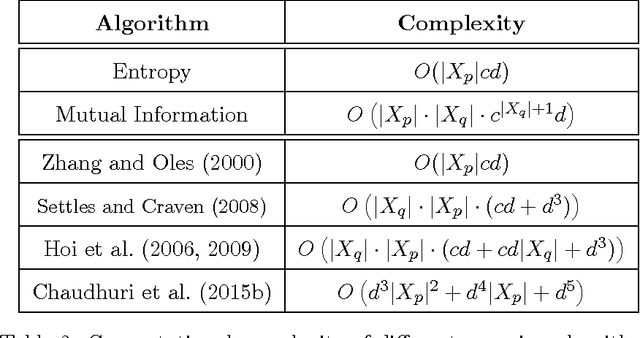Todd K. Leen
Asymptotic Analysis of Objectives based on Fisher Information in Active Learning
Oct 14, 2016

Abstract:Obtaining labels can be costly and time-consuming. Active learning allows a learning algorithm to intelligently query samples to be labeled for efficient learning. Fisher information ratio (FIR) has been used as an objective for selecting queries in active learning. However, little is known about the theory behind the use of FIR for active learning. There is a gap between the underlying theory and the motivation of its usage in practice. In this paper, we attempt to fill this gap and provide a rigorous framework for analyzing existing FIR-based active learning methods. In particular, we show that FIR can be asymptotically viewed as an upper bound of the expected variance of the log-likelihood ratio. Additionally, our analysis suggests a unifying framework that not only enables us to make theoretical comparisons among the existing querying methods based on FIR, but also allows us to give insight into the development of new active learning approaches based on this objective.
 Add to Chrome
Add to Chrome Add to Firefox
Add to Firefox Add to Edge
Add to Edge